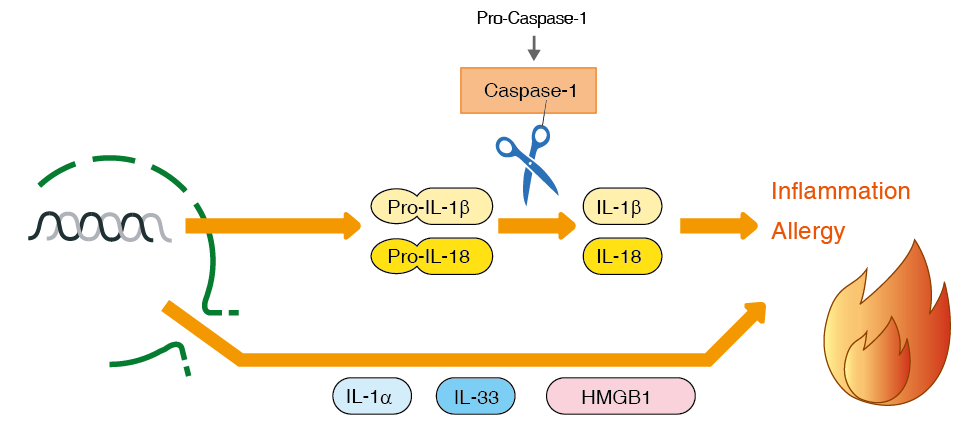Published by Bindi M. Doshi, PhD on Mar 2, 2015 9:48:00 AM

Antibodies are wonderful. They can act as little detectives to help you determine if the protein you’re interested in is involved in a certain process or help characterize the function. But what if your favorite protein has two forms? Is your antibody sophisticated enough to be able to detect one form over the other? Does this knowledge help you? How? IL-18 is one such protein that has two forms. It is present when it is inactive and present when it is active. So what is known about IL-18 and its function and the two forms it can exist in?
IL-18 (Interleukin-18) is part of the IL-1 superfamily and is a part of several processes including involvement in inflammation and disease states such as cancer. High levels of IL-18 are detected in the blood of patient with allergic diseases (bronchial asthma, atopic dermatitis, allergic rhinitis, etc.) and those with autoimmune diseases (rheumatoid arthritis, systemic lupus erythematosus (SLE), adult Still’s disease, multiple sclerosis, Crohn’s disease, ulcerative colitis, etc.). IL-18 is also found in the urine of patients with acute renal disorder5 and appears to mediate the progression of type 2 diabetes6.
IL-18 also has an important function in the regulation of immune response. It can be produced by dendritic cells, monocytes, macrophages, neutrophils and epithelial cells. It is present as proform 24 kDa precursor, lacking a signal peptide required for secretion.4 The active form is IL-18, which is present in many different tissue types.2 However, in order to be activated, it must be cleaved. ICE (IL-1β Converting Enzyme) or Caspase 1 cleaves Pro-IL-18 after Asp35, leading to the mature and active form of IL-18, measuring at 18 kDa.2 Cleavage of Pro-IL-18 into IL-18 and cleavage of Pro-IL-1β into mature IL-1β allow these molecules to release from the cell and induces IFN-γ secretion, Th1 cells and NK cells activation.1,3 This activation has shown to be an important aspect of immune defense. In IL-18 deficient mice, the ability to fight off bacteria and parasites was significantly diminished, thus showing the importance of active IL-18 in the immune response. IL-18 also shows a rapid secretion/activation response. Induction is observed as early as 1 hour after stimulation with anti-CD40.7 The regulation and release of IL-18 is still under investigation. Results can lead to therapeutic remedies since it appears that IL-18 has significant involvement in early immune response.
So why is it important to know which form of IL-18 you are detecting? If you are trying to induce an immune response, the detection of IL-18 could be one measure to show induction has occurred. The presence of IL-18 could act as early warning sign that there are dangerous pathogens (such as cancer cells).
MBL International provides IL18 ELISA kits for the detection of IL18 in samples such as plasma and serum. Data shows that when 0.5 ug/mL of Pro-IL-18 was measured, the kit replied only 3.56 ng/mL for it. From this result, it is estimated that cross-reactivity of 7620 to pro-IL-18 is less than 1%. There are publications, which report cross-reactivity of 7620 to pro-IL-18 is extremely low.8,9,10 To date, this information implicates MBLI’s IL-18 kit is very specific for the active form of IL-18.
